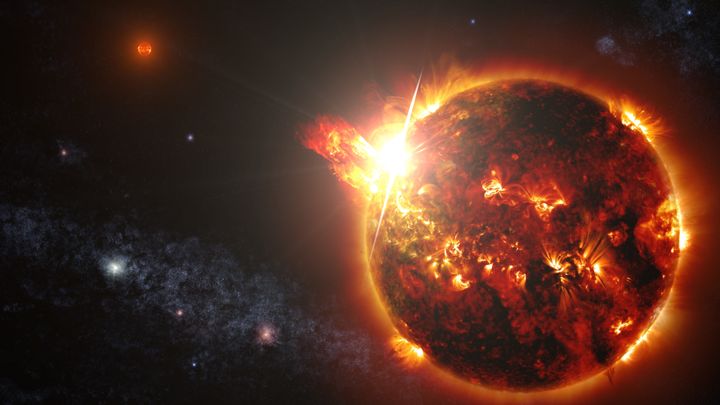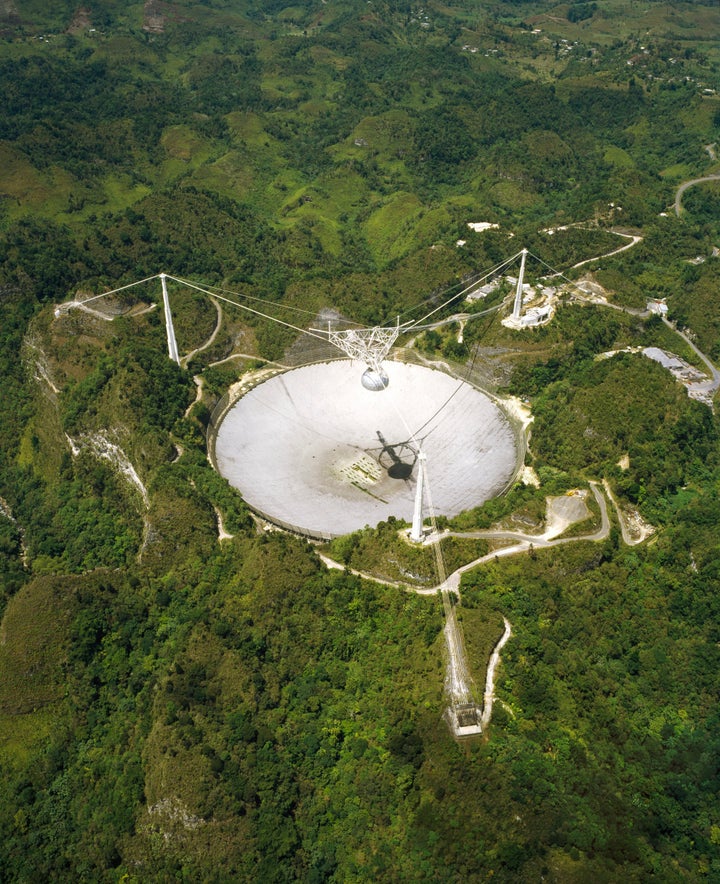Scientists from the Arecibo Observatory have finally found what they believe is the cause of a mysterious radio signal that was picked up during one of their routine observations last month.
The signal appeared as part of a routine observation of seven solar systems that they believed contained red dwarf stars with orbiting planets.

Now after consulting with both other experts in radio astronomy and The Search for Extraterrestrial Intelligence (SETI), Prof Abel Méndez and his team are confident that they know what caused it.
“The best explanation is that the signals are transmissions from one or more geostationary satellites.” explains Prof Méndez. “This explains why the signals were within the satellite’s frequencies and only appeared and persisted for Ross 128; this star is close to the celestial equator where many geostationary satellites are located.”
However if you think the mystery has been fully solved, then you might want to keep on reading.
You see while a satellite had already been put forward as one of the possible explanations for the signal it came with a significant caveat which is that no known satellite has produced a radio burst like the one that was detected.
Prof Méndez explains that it could be caused by multiple reflections however the team will need to investigate further before they have a definitive answer.

The signal was originally picked up as part of a project to study red dwarf stars with possible orbiting planets.
During their observations they picked up an odd signal coming from a red dwarf just 11 light-years away.
Without any explanation as to what had caused it Prof Méndez suggested there could have been three possible reasons.
″(1) Emissions from Ross 128 similar to Type II solar flares, (2) emissions from another object in the field of view of Ross 128, or just (3) burst from a high orbit satellite since low orbit satellites are quick to move out of the field of view.” he concluded.
Unsurprisingly it didn’t take long before the word ‘aliens’ was mentioned, however Prof Méndez was quick to pour water on that theory.
Despite that, Prof Méndez said the story garnered “much more attention from the press than we expected”.
While the press involvement certainly added a new challenge for the team, Prof Méndez believes the whole experience has been a beneficial one.
“Finally, this was a great experience of open science.” He writes. “Sometimes projects, observational campaigns or missions do not necessarily reach their objectives. The lesson here is that we all need to continue exploring and sharing results openly. Some people prefer to only learn about the successes, but others prefer science in real-time, no matter the end result.”
